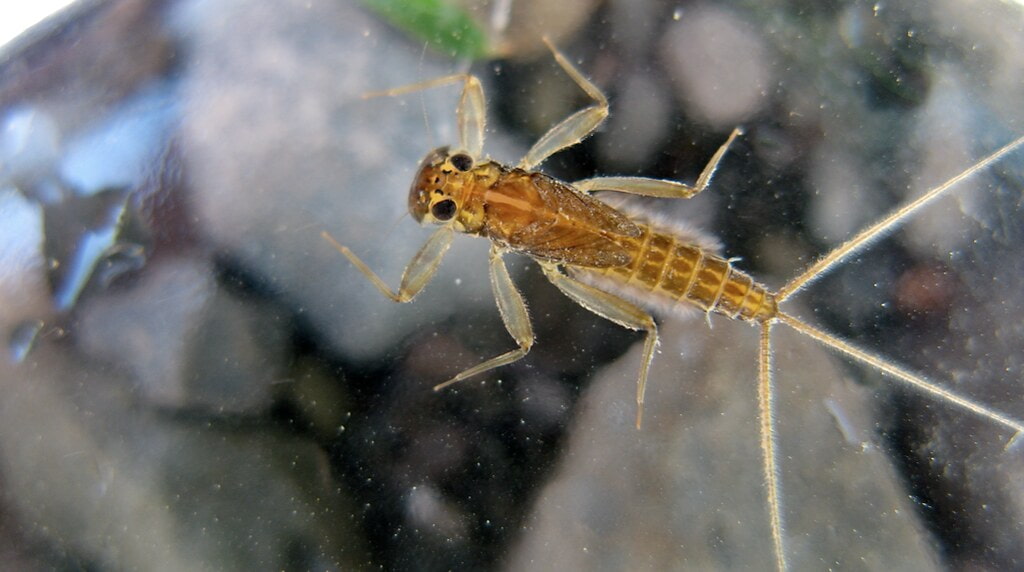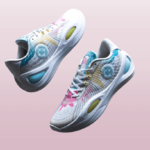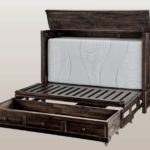Fly fishing enthusiasts frequently target mayfly nymphs, and landing one can be pretty satisfying. With the proper equipment and techniques, anyone can learn to use a fly rod to catch mayfly nymphs.
This article introduces mayfly nymphs and discusses the tools and methods required for a successful catch. Finally, a summary of the main ideas and some beneficial guidance will be provided. Additionally, we’ll offer advice and methods to readers so they can more successfully catch mayfly nymphs. If you’re prepared to take on the thrilling task of using your fly rod to see mayflies, continue reading!
Contents
Overview of mayfly nymphs
Aquatic insects that go through partial metamorphosis are called mayfly nymphs. Tiny insects come in various sizes and shapes to inhabit in little, gently flowing streams. Worldwide, there are roughly 2000 species of mayfly nymphs, and the most frequent characteristics are long antennae and slender bodies.
Fly fishermen have turned to chasing mayfly nymphs because they are accessible in some parts of the world. Mayfly nymphs are an essential food supply for predators like bass and trout, helping to sustain populations throughout the year.
The environment affects the life cycle of mayfly nymphs. Larvae will take longer to mature into adults in colder regions; they will develop into adults more quickly in warmer settings. Larvae grow into adults and undergo several molt stages before becoming winged, flight-capable beings. Before emerging from the water as adults prepared to mate, they graze on algae, bacteria, and other organic elements prevalent in their aquatic environment during this time of year.
Minor differences exist between the preferred habitats and food sources of the several species of mayfly nymphs. Certain species, for instance, would favor living in rivers, while others might select lakes or ponds. This indicates many options for mayfly fly fishing, depending on where you are!
Mayfly nymphs are aquatic insects that go through several molts to partially transform before becoming adults. When they are thoroughly developed and able to fly, they are ready to mate and have offspring. They are a significant food source for predators like bass and trout and can be found in shallow, slowly flowing streams worldwide. They are consequently a valuable target for fly anglers looking to land a rare piece of gear.
Gearing up for catching mayfly nymphs
You must have the right gear to fly fish for mayfly nymphs. Your choice of the fly rod will dictate how much line weight you can cast and how forcefully you can set a hook. Please ensure your rod’s tippet size and line weight are appropriate for nymphs, as they come in different sizes.
Fly boxes also allow you to keep track of your collection of mayfly nymph patterns. Verify if they are large enough to be waterproof and suit all the different fishing patterns you require. Choosing the suitable leader material is also quite important, depending on the type of water you’re fishing.
While heavier leaders are more effective in shallow or swiftly moving water, lighter leaders are more effective in shallow or slowly moving water. Remember that waders are necessary for fly fishing, so make sure yours fit correctly and offer sufficient weather protection.
You will be prepared to fight mayfly nymphs if all you have satisfies your needs. When out on the water, always have fun and push yourself to improve! The adage “practice makes perfect” holds.
Casting techniques for mayfly nymphs
A key element of successful fly fishing is mayfly nymph casting. Choosing waders, rods, and leader material is essential for success. To avoid being discouraged when learning the fundamentals, it is imperative to practice while enjoying yourself.
While selecting a rod, it’s critical to consider length, weight, and movement. Longer rods are more accurate and valuable for line control since they can reach farther than shorter ones. When choosing a consequence, it’s critical to consider the type of water: heavier rods work better in larger lakes, while lighter rods work better in smaller streams and creeks.
The word “action” refers to how the rod flexes when casting; heavier flies can be thrown farther with slower actions, but accuracy is improved with faster movements.
After choosing the right rod, the next step is to use a simulated throw to get the fly on the desired trajectory. Lifting back on the fly rod tip, which stops just before one o’clock, is how to execute this method. Then, at eleven o’clock, push forward while releasing some lines from your left hand behind you (for right-handers).
This sends out a loop that descends near its destination and rises back up. Continue doing this until you get the distance you want, and then release your last false cast at nine o’clock to ensure your fly lands where it should.
Mayfly nymph fishing requires careful attention to timing and presentation since these are sensitive insects that notice changes in their surroundings. Practice making gentle casts at different angles to make your fly look natural as it glides downstream into their hiding places, where it may feed without drawing attention from potential predators.
You need to focus on accuracy when casting because of their small size; if you throw with too much power, it will scatter away from its intended landing location due to probable adjacent hazards.
Lastly, always cast downstream as opposed to upstream. This will allow you to remain concealed behind cover while allowing the current to carry your fly downstream towards its intended location without frightening any fish away with strange motions or loud noises that might scare them away and into deeper waters or farther away from shoreline areas where they typically hide during feeding seasons.
Mayfly nymphs are considerably easier to catch when you use these pointers, sound equipment, and lots of practice!
Retrieving the nymphs from the water
It can be challenging to retrieve mayfly nymphs from the water, but it’s essential to catch them. Appropriate depth determination is the first step toward a successful recovery. How this plays out will depend on the kind of mayfly nymphs you’re looking for; some like shallow water, while others live at deeper depths.
For the least amount of disturbance possible, retrieve them slowly and steadily once the proper depth has been determined. Fish should not be scared off; you should not move too much and cause them to dump your fly.
Observe any obstructions when retrieving and adjust your line as needed. Be ready to act swiftly and modify your plan for an unforeseen event or crisis. To prevent disturbing any nearby fish or wildlife, gently place the mayfly nymph you think you have in your hands on a beach or other moist surface.
If the reader has the proper gear and fly-fishing techniques, these recommendations should help them retrieve mayfly nymphs from the water with their fly rods. If you do this, you’ll be more successful in catching them, and it will be enjoyable!
Tips and tricks for successfully catching mayfly nymphs
- While fly fishing for mayfly nymphs is not always straightforward, there are some valuable hints and techniques you can pick up to improve your odds.
- Select a fly size marginally more significant than the native insects to boost your chances of attracting mayfly nymphs; larger flies are more likely to be noticed by trout and bass. Consider the current and the water’s temperature while selecting a fly. Smaller flies are preferable in colder seas since fish are less likely to catch larger ones.
- It would be best to have a drag-free drift when using mayfly nymphs for fishing. Try not to make sudden changes in line tension, as this may scare the nearby fish and throw off their feeding schedule. Using softer tippets and gently tossing at various angles will accomplish this. Fly fishing deeper waters has been reported to attract mayfly nymphs; use a sinking line to assist in bringing your flies down to this level.
- In summary, mayfly nymphs are not known to attack right away; therefore, it could take several minutes or longer for you to get bitten. You will need to be patient to find them. When you hike with superior equipment—such as water height, premium rods, and leader material—your next fly fishing expedition will be much more successful!
Conclusion
My last piece of advice for fly fishing for mayfly nymphs is to hone your skills while admiring the beautiful scenery. Insect capture is a skill that, with practice and the right equipment, you can master. Practice makes perfect, so keep that in mind at all times! As your skills improve, you can determine the optimal retrieve depth, employ appropriate false throwing methods, and gradually introduce alternative throwing angles. You should also always use softer tippets to follow mayfly nymphs because they favor shallow water.
This blog post should have given you additional information about catching mayfly nymphs with a fly rod. There are a lot of articles, videos, and other resources online that can help you learn how to fly fish for mayfly nymphs so you can become better at it. Please use the comment section or one of our social media accounts to contact us if you have any queries or need further help with fly fishing techniques. Your willingness to read this means a lot to me.
According to this article, even a complete newbie may become a master mayfly nymph fisherman with the correct equipment and plenty of practice. Hunting these fragile species will be more successful if you put in the time and effort to understand how to use your gear correctly and practice false throwing.










